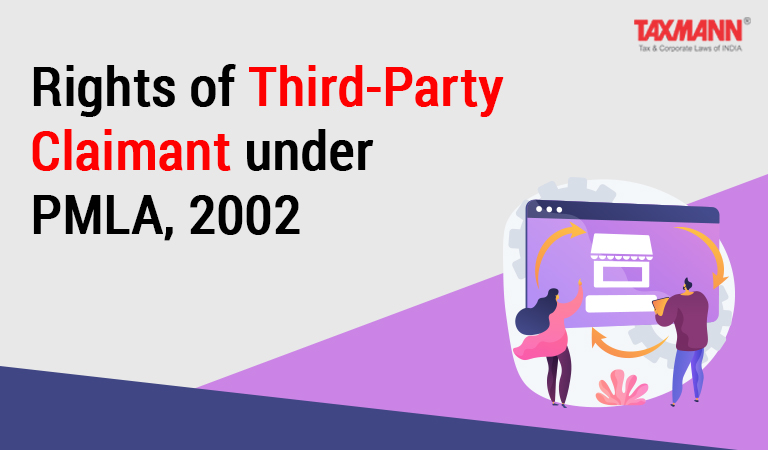Rights of Third-Party Claimant under PMLA, 2002
- Blog|News|FEMA & Banking|
- 2 Min Read
- By Taxmann
- |
- Last Updated on 21 August, 2021
[2021] 129 taxmann.com 193 (Article)
1.1 The Prevention of Money Laundering Act, 2002 (“PMLA”) was enacted with the object to prevent and criminalise the offence of ‘money laundering in India along with confiscation of the ‘proceeds of crime’. The offence of ‘money laundering has been defined in Section 3, and is reproduced hereunder for the reader’s convenience:
“Whosoever directly or indirectly attempts to indulge or knowingly assists or knowingly is a party or is actually involved in any process or activity connected with the proceeds of crime including its concealment, possession, acquisition or use and projecting or claiming it as untainted property shall be guilty of the offence of money-laundering.”
1.2 On reading the above definition, the primary thought is that – To fully understand the meaning of the offence of money laundering, we have to first understand what proceeds of crime is ?. Section 2(1)(u) defines “Proceed of Crime”, which is reproduced below :
“Section 2(1)(u) -“Proceeds of Crime” means any property derived or obtained, directly or indirectly, by any person as a result of criminal activity relating to a scheduled offence or the value of any such property or where such property is taken or held outside the country, then the property equivalent in value held within the country or abroad.
Explanation —For the removal of doubts, it is hereby clarified that “proceeds of crime” include property not only derived or obtained from the scheduled offence but also any property which may directly or indirectly be derived or obtained as a result of any criminal activity relatable to the scheduled offence;”
1.3 Constituents of ‘Proceeds of Crime’ :
1.3.1 As per the above definition of ‘Proceeds of Crime’ can essentially be bifurcated into 3 types of properties:
(a) property derived or obtained, directly or indirectly, by any person as a result of criminal activity relating to a scheduled offence; or
(b) value of any such property; or
(b) value of any such property; or
1.4 However, there has been a long and unsettling dispute on the question as to (1) Whether Proceeds of Crime includes Clean and Untainted Property also? and (2) What are the rights of 3rd party claiming legitimate & bonafide interest and possession in such Clean and Untainted Property, being attached by the enforcement authorities under PMLA. Recently, the Hon’ble Delhi High Court in its judgment dated 2-4-2019 in the case of Deputy Director Directorate of Enforcement Delhi v. Axis Bank [Crl. Appeal No. 143 of 2018] (“relevant judgment”), has dealt with this issue in a detailed manner among others.
Click here to read the full article
Disclaimer: The content/information published on the website is only for general information of the user and shall not be construed as legal advice. While the Taxmann has exercised reasonable efforts to ensure the veracity of information/content published, Taxmann shall be under no liability in any manner whatsoever for incorrect information, if any.

Taxmann Publications has a dedicated in-house Research & Editorial Team. This team consists of a team of Chartered Accountants, Company Secretaries, and Lawyers. This team works under the guidance and supervision of editor-in-chief Mr Rakesh Bhargava.
The Research and Editorial Team is responsible for developing reliable and accurate content for the readers. The team follows the six-sigma approach to achieve the benchmark of zero error in its publications and research platforms. The team ensures that the following publication guidelines are thoroughly followed while developing the content:
- The statutory material is obtained only from the authorized and reliable sources
- All the latest developments in the judicial and legislative fields are covered
- Prepare the analytical write-ups on current, controversial, and important issues to help the readers to understand the concept and its implications
- Every content published by Taxmann is complete, accurate and lucid
- All evidence-based statements are supported with proper reference to Section, Circular No., Notification No. or citations
- The golden rules of grammar, style and consistency are thoroughly followed
- Font and size that’s easy to read and remain consistent across all imprint and digital publications are applied








 CA | CS | CMA
CA | CS | CMA


